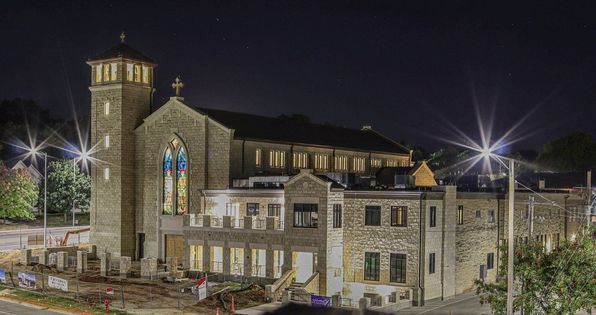
Studio Museum in Harlem, Renowned for Promoting Black Artists, Set to Reopen Next Year

# The Studio Museum in Harlem: Revamping for the Future and Honoring the Past
The renowned **Studio Museum in Harlem** has served as a cultural hub for Black artists and the Harlem community since its establishment in 1968. Now, after years of persistent efforts and, notably, some setbacks, the museum is gearing up to open the doors of its new and expanded space on West 125th Street next fall, marking a monumental moment for the institution and those who cherish its vision.
## A History Rooted in Activism and Artistic Excellence
The **Studio Museum** was founded amidst a challenging social and cultural climate in the late 1960s. Created by a collective of artists, activists, and philanthropists, its mission was clear: promote and give visibility to Black artists who were marginalized or outright excluded from mainstream galleries and institutions. Over the years, the museum has played a pivotal role in pioneering dialogue around Black art, its significance in culture, and promoting the work of both emerging and established Black artists.
## A Much-Needed Expansion
After being closed to the public since 2018 for expansion and renovation, the long-overdue completion of the museum’s new building is now on the horizon, set for a grand opening in the fall of next year. The transformative project will see the museum more than double its exhibition and public spaces. This expansion is part of a larger **$300 million fundraising campaign**, increased from the initial $250 million goal, to ensure both the successful completion of construction and the museum’s future sustainability.
The campaign has already raised an impressive **$285 million**, covering costs associated with the building’s construction, as well as contributing to the institution’s endowment and operational reserves.
## David Adjaye’s Design: A Complicated Legacy
While the building’s design vision was largely shaped by celebrated British-Ghanaian architect **David Adjaye**, the museum distanced itself from him in 2022 following accusations of sexual assault and harassment from multiple women, which Adjaye has denied. Despite severing official ties with Adjaye, the museum decided to continue working with his New York-based firm, Adjaye Associates, alongside collaborators **Cooper Robertson** (Executive Architect) and the Harlem-based landscape design firm **Studio Zewde**, which is designing the museum’s roof terrace.
## A Groundbreaking Opening Season
The reopening of the Studio Museum will coincide with several high-profile exhibitions, honoring its legacy and central role in Black culture and art history. One of the key highlights will be a retrospective dedicated to the late sculptor and community activist **Tom Lloyd**, whose exhibit titled *Electronic Refractions II* was featured during the museum’s original opening in 1968 on Fifth Avenue. Lloyd’s work, deeply rooted in activism and the Black liberation movement, exemplifies the ethos that the Museum has championed since its inception.
Additionally, works by other contemporary and historical Black artists will grace the museum’s rejuvenated spaces. Several public art installations have been announced:
– **David Hammons**’ iconic “Untitled Flag” (2004) will adorn the museum’s exterior facade, delivering Hammons’s sharp political commentary on race, identity, and American symbolism.
– **Glenn Ligon**’s neon light sculpture “*Give Us a Poem*” (2007) will occupy a prominent spot in the museum’s lobby, continuing the dialogue around literature, race, and language.
– On the second floor, **Houston E. Conwill’s** seven bronze time capsules titled “*Joyful Mysteries*” (1984) will allow visitors to explore art centered around history, memory, and the passage of time.
Beyond these standalone pieces, the museum will also display works by renowned figures such as **Faith Ringgold** and **Dawoud Bey**, further solidifying its commitment to showcasing key players in the Black art movement and offering a space of creative exploration and representation.
## Looking to the Future
As the museum embraces this new chapter, it carries forward its enduring mission: to champion the creative voices that remain too often marginalized and underrepresented in traditional institutions. The revitalized space and the furnished programming will strengthen opportunities for meaningful interactions between artists, their work, and the community.
Reflecting on both its past and future roles, the Studio Museum continues to lead as an institution founded on the principles of *inclusivity, activism,* and the *celebration* of Black art. Its expansion will allow it to broaden its reach, unlocking more potential for educational programs, community engagement, and cutting-edge exhibitions. This expansion is not just about building larger galleries — it is about creating an enduring platform where diverse voices can thrive, all while honoring Harlem’s rich artistic and cultural legacy.
With its doors opening once again for public viewing next year, the Studio Museum in Harlem will reaffirm its position not just as a local landmark, but as a beacon of artistic innovation, social justice, and cultural dialogue that resonates both nationally and globally.